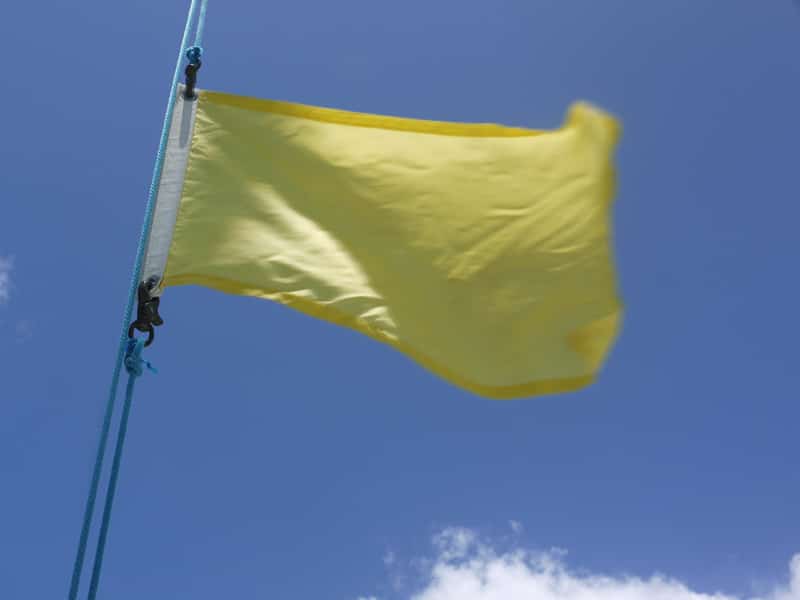
During our 13 years of world cruising, we have raised our yellow quarantine, or Q, flag dozens of times. It has flown in all four hemispheres and under all conditions—rich blue skies, dark stormy skies, during the day, and in the night. The flag has shaken the halyard, whipping and snapping in heavy weather when sailing close hauled into New Zealand with cold wet decks under tight sails and low clouds. It has hung quietly in still humid tropical air while motoring over glassy seas into southern Thailand; and it has waved gently in warm Caribbean trade winds where volcanic peaks on the horizon marked our destination after 16 days crossing the Atlantic.
At times the yellow flag has flown for two days while we have waited patiently for our turn to be cleared by officials, while in most countries it is on display for just a few hours. Frequently it flutters over an empty boat while we take our dinghy ashore to wander on sea legs through busy streets in foreign cities, searching for customs and immigration offices that have, on occasion, been located miles apart.
To the casual observer this plain yellow flag may seem rather uninspiring—after all, it bears no markings or design—yet raising it to the starboard spreader, for us at least, has always been a time of celebration and certainty. It marks our approach to land, our arrival, and the promise of a new country to explore after days, weeks, or even a whole month at sea.
But our flag has never flown in these conditions, during a global pandemic. When the majority of countries are fighting a virus behind closed borders, and where lockdowns have left many mariners literally stranded at sea with an entire ocean separating them from the nearest port offering refuge.
To the modern mariner, the Q flag represents a request for clearance. But in the 18th century “Yellow Jack,” a name given to the yellow and black checkered quarantine flag, symbolized not an arrival, but likely that of an ultimate departure. It flew as a warning from ships already riddled with infectious disease, from yellow fever, smallpox to cholera. It was an ominous and frightening message to mariners and to officials ashore that contagion had stowed away and that ship, and passengers, were contaminated. It was a haunting signal and one that resulted in quarantine, a word derived from the Italian quaranta giorni, meaning “forty days,” the length of isolation.
Our Q flag was flying above Dream Time in the US Virgin Islands when COVID-19 spread into the Caribbean, and while these islands are not home waters, they are, thankfully, home territory. And so by chance we found a sanctuary just 1,000 nautical miles from the mainland we sailed away from over 46,000 nautical miles ago, not stranded at sea or isolated in a remote corner of the world.
Our Q flag is faded now, it is no longer the vibrant yellow it once was but a softer memory of its original color. Its edges are weathered too. The fabric is worn thin and a little tattered around the edges. It has travelled with us around the world and is a welcome prelude to the milestones of our journey, unfurled and released to fly into each new country we have sailed, a satisfying and comforting ceremony that results in the raising of a new courtesy flag.
Soon we will set sail for mainland America. But as borders are closed between the Virgin Islands and Florida, we will not be raising our Q flag again on this world voyage, at least not in another foreign country. And while we do not know which overseas port our Q flag will fly next, of this I am sure: We shall sail clear of these uncertain times, Q flags will soon fly again, whipping, waving and fluttering around the world under starboard spreaders, over calmer waters, and that is an arrival we will all celebrate together.
To read more about Dream Time’s world voyage, visit: www.zeroXTE.com.








